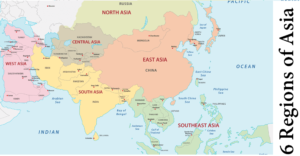which countries in asia: Asia is the largest and most populous continent in the world, covering approximately one-third of the Earth’s land area. It is home to a diverse range of cultures, languages, religions, and traditions, making it a fascinating and complex region.
The countries in Asia vary greatly in terms of their geography, climate, and economy. Some of the countries, such as China and Japan, are among the world’s largest economies, while others are less developed and rely heavily on agriculture or natural resources.
Asia is also home to several important historical and cultural sites, including the Great Wall of China, the Taj Mahal in India, and the Angkor Wat temples in Cambodia. From bustling cities to remote rural areas, Asia offers a wealth of experiences for travelers and visitors.
Countries in Asia
The countries in Asia are spread across the continent and include Central Asia, East Asia, South Asia, Southeast Asia, and Western Asia. Each region has its own unique characteristics and attractions, making it a fascinating and diverse destination for visitors.
According to the United Nations, there are 48 countries in Asia today. The full list is shown in the table below, with current population and sub-regions (based on official UN statistics).
Not included in this “countries” total and listed separately are: Conventionally there are six main geographical regions or subregions in Asia.
- Northern Asia
- Western Asia
- Central Asia
- Eastern Asia
- Southern Asia
- Southeast Asia
Some Facts about Asia
countries in asia ; Asia is the largest of the five continents on planet Earth by area and population. The term Asia commonly refers to the eastern part of the Eurasian mainland plus the island nation of Japan and the island nations of maritime Southeast Asia.
The continent is located almost entirely north of the equator, with the exception of some islands in Southeast Asia. Asia is connected to Africa by the Isthmus of Suez and borders Europe (part of the same landmass) along the Ural Mountains and across the Caspian Sea.
How many countries are there in Asia?
countries in asia : The area is shared by 50 countries. By far the largest country in terms of area is Russia with over 17 million km², of which 13 million km² (77%) is in Asia.
The second largest Asian country is China with an area of 9.6 million km².
The smallest independent state in Asia is the island state of Maldives with 298 km².
North Asia
North Asia or Northern Asia refers to the vast northern part of Asia east of the Ural Mountains, also known as Siberia. The region is divided into the Russian Federal Districts of the Urals, Siberia and the Russian Far East. A large territory of 13 million km² (5.1 million sq mi),
it is bordered by the Arctic Ocean to the north, European Russia to the west, and the Bering Sea to the east. Siberia shares international borders with Kazakhstan, Mongolia and China to the south.
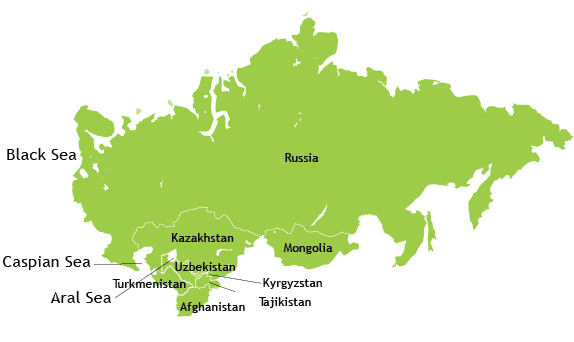
countries in asia : North Asia is a subregion of Asia that includes the northern part of the continent. It is sometimes referred to as Siberia, as much of the region is covered by the Siberian wilderness. North Asia is also sometimes referred to as Northeast Asia, as it includes parts of the northeastern region of Asia.
The countries that make up North Asia include Russia, Kazakhstan, Mongolia, and parts of China. These countries are known for their harsh climates and rugged landscapes, including vast plains, mountains, and tundra.
The region is known for its rich natural resources, including oil, gas, and minerals, which have played a significant role in the economies of these countries. Russia is the largest country in North Asia and one of the world’s largest producers of oil and gas.
North Asia has a unique culture and history, influenced by the indigenous populations and the various empires that have ruled the region over the centuries. The region has a mix of ethnic groups, including Russian, Kazakh, Mongolian, and Chinese.
| Country | Population (1000) | Capital |
|---|---|---|
| Russia | 36,000 | Moscow |
Western Asia
West Asia refers to the western part of Asia, which includes the Arabian Peninsula and most countries in the Middle East. Western Asia is a subregion of Asia that includes the countries located in the western part of the continent. It is also sometimes referred to as Southwest Asia or the Middle East. The countries that make up Western Asia include:
The region is known for its diverse cultures and religions, with Islam, Judaism, and Christianity being the major religions. The Middle East is also known for its ancient history, with some of the world’s oldest civilizations originating in the region, including the Sumerian, Babylonian, and Assyrian empires.
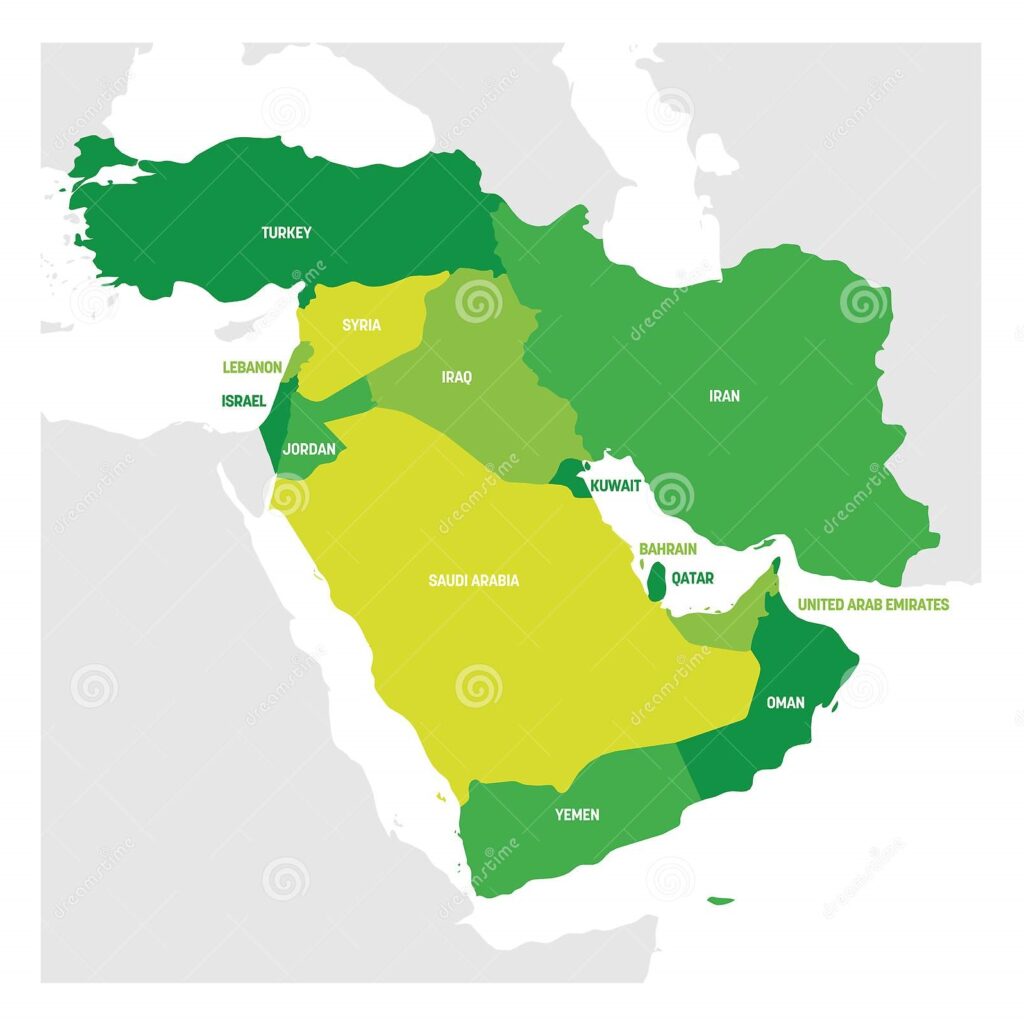
The countries in Western Asia are known for their unique landscapes, including deserts, mountains, and coastlines. The region is also home to several important bodies of water, including the Persian Gulf, the Red Sea, and the Tigris and Euphrates rivers.
The economies of the countries in Western Asia vary, with some countries relying heavily on oil and gas exports, while others have more diversified economies. Saudi Arabia is the largest oil producer in the region, while Turkey has a more diversified economy, including manufacturing and tourism.
There are 19 countries in West Asia (the UN geoscheme lists only eighteen). Apart from Armenia, Georgia, Israel and the Republic of Cyprus, these are all countries with majority Muslim populations. Approximately 279 million people live in the region (in 2020).
| Country | Population (1000) | Capital |
|---|---|---|
| Armenia | 2,937 | Yerevan |
| Azerbaijan | 10,015 | Baku |
| Bahrain | 1,638 | Manama |
| Cyprus | 1,198 | Nicosia (Lefkosia) |
| Georgia | 3,904 | T’bilisi |
| Iran | 82,821 | Tehran |
| Iraq | 40,412 | Baghdad |
| Israel | 8,584 | Jerusalem (claimed) |
| Jordan | 10,070 | Amman |
| Kuwait | 4,249 | Kuwait (City) |
| Lebanon | 6,066 | Beirut |
| Oman | 5,002 | Muscat |
| Qatar | 2,744 | Doha (Al-Dawhah) |
| Saudi Arabia | 34,141 | Riyadh |
| State of Palestine | 5,187 | Jerusalem (claimed) |
| Syria | 18,499 | Damascus |
| Turkey | 82,962 | Ankara |
| United Arab Emirates | 9,682 | Abu Dhabi |
| Yemen | 29,580 | Sanaa |
Central Asia
The term Central Asia refers to the area in Asia between the Caspian Sea and western China. Central Asia includes Afghanistan, Kazakhstan, Kyrgyzstan, Tajikistan, Turkmenistan, and Uzbekistan, which are all predominantly Muslim countries and, with the exception of Afghanistan, were all former Soviet republics.
An estimated 74 million people live in Central Asia (in 2020).
Central Asia is known for its rugged terrain, including vast deserts, high mountain ranges, and grassy steppes. The region is also home to several important rivers, including the Amu Darya and Syr Darya.

The countries in Central Asia have a rich history, with several important trade routes, such as the Silk Road, passing through the region. The region has been influenced by various empires over the centuries, including the Mongol Empire and the Timurid Empire.
The economies of the countries in Central Asia vary, with some countries relying heavily on natural resources, such as oil and gas, while others have more diversified economies. Kazakhstan is the largest economy in the region, with a mix of natural resource exports and a growing service sector
Central Asia is also known for its unique culture, which includes a blend of indigenous traditions and influences from neighboring regions, such as Russia and China. The region has a rich music and arts scene, including traditional forms such as the dombra and the suzani embroidery.
| Country | Population (1000) | Capital |
|---|---|---|
| Afghanistan | 37,209 | Kabul |
| Kazakhstan | 18,593 | Nur-Sultan |
| Kyrgyzstan | 6,219 | Bishkek |
| Tajikistan | 9,292 | Dushanbe |
| Turkmenistan | 5,943 | Ashgabat |
| Uzbekistan | 32,807 | Tashkent |
East Asia
East Asia or Eastern Asia usually refers to the eastern part of the Asian continent plus the island nation of Japan.
The United Nations Geochart lists five sovereign countries plus the Chinese Special Administrative Regions of Hong Kong and Macau, as well as the Republic of China (Taiwan) of uncertain political status.
East Asia has approximately 1.68 billion people (in 2020). East Asia is known for its diverse cultures and rich history, with ancient civilizations such as China and Japan having significant impacts on the region and the world. The region is also known for its technological advancements and innovative industries.

The countries in East Asia have varying landscapes, including mountains, forests, coastlines, and deserts. The region is also home to several important rivers, including the Yangtze and Yellow rivers in China, and the Han and Nakdong rivers in South Korea.
The economies of the countries in East Asia vary, with China being the largest economy in the region and the world. Japan and South Korea are also major economic players in the region, with advanced technology and manufacturing industries.
East Asia is also known for its unique culture, including traditional art forms such as calligraphy, painting, and ceramics. The region has a rich culinary scene, with distinctive cuisines such as Chinese, Japanese, and Korean.
| Country | Population (1000) | Capital |
|---|---|---|
| China | 1,400,000 | Beijing |
| China, Hong Kong SAR | 7,491 | Hong Kong |
| China, Macao SAR | 642 | Macao City |
| Japan | 126,855 | Tokyo |
| Korea (North) | 25,727 | Pyongyang |
| Korea (South) | 51,339 | Seoul |
| Mongolia | 3,166 | Ulaanbaatar |
| Taiwan | 23,758 | Taipei |
South Asia
South Asia or South Asia refers to the southern part of Central Asia. The region is bordered by the Indian Ocean to the south and the Himalayas to the north. There are eight sovereign countries in South Asia. The United Nations geoscheme includes Afghanistan in South Asia.
South Asia is home to an estimated 1.94 billion people (in 2020). South Asia is known for its diverse cultures, religions, and languages, with Hinduism, Buddhism, Islam, and Sikhism being the major religions. The region is also known for its ancient history, with some of the world’s oldest civilizations, such as the Indus Valley Civilization, originating in the region.
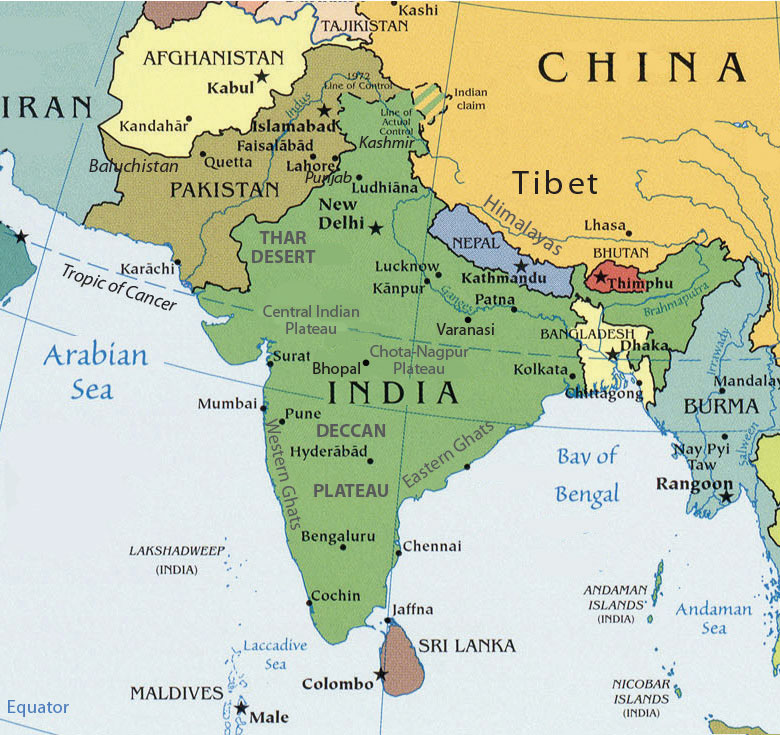
The countries in South Asia have varying landscapes, including the Himalayan mountain range in Nepal, Bhutan, and northern India, and the lush tropical forests and beaches of Sri Lanka and the Maldives. The region is also home to several important rivers, including the Ganges, Indus, and Brahmaputra.
The economies of the countries in South Asia vary, with India being the largest economy in the region and the world’s fifth-largest economy. The region is also home to several rapidly developing economies, such as Bangladesh and Nepal.
South Asia is also known for its unique culture, including distinctive art forms such as the intricate henna designs of India and the colorful textiles of Bangladesh. The region has a rich culinary scene, with diverse cuisines such as Indian, Pakistani, Sri Lankan, and Nepalese.
| Country | Population (1000) | Capital |
|---|---|---|
| Bangladesh | 168,066 | Dhaka |
| Bhutan | 826 | Thimphu |
| India | 1,368,738 | New Delhi |
| Maldives | 452 | Male |
| Nepal | 29,942 | Kathmandu |
| Pakistan | 204,596 | Islamabad |
| Sri Lanka | 21,019 | Colombo |
South East Asia
Southeast Asia refers to the part of Asia that includes the Indochinese Peninsula and the peoples of maritime Southeast Asia. The region is located in the southeastern part of the continent, south of China, east of India and north of Australia.
According to the United Nations Population Division, Southeast Asia is home to approximately 668 million people (in 2020). Southeast Asia is known for its diverse cultures, religions, and languages, with Buddhism, Islam, and Christianity being the major religions. The region is also known for its tropical climate, lush jungles, and beautiful beaches.
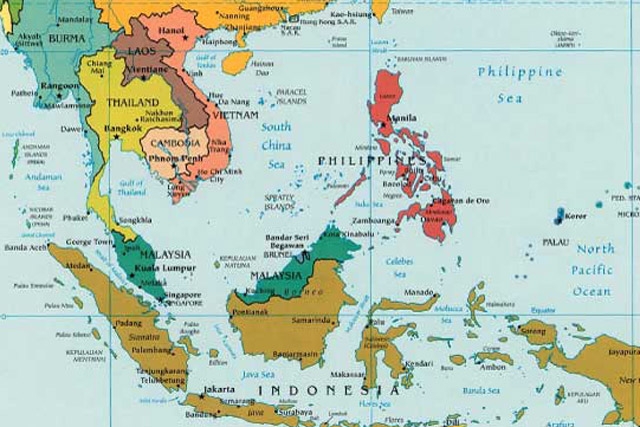
The countries in Southeast Asia have varying landscapes, including mountain ranges, tropical forests, and coastlines. The region is also home to several important rivers, including the Mekong and Chao Phraya.
The economies of the countries in Southeast Asia vary, with some countries relying heavily on natural resources, such as oil and gas, while others have more diversified economies. Singapore is the largest economy in the region, with a highly developed service sector.
Southeast Asia is also known for its unique culture, including distinctive art forms such as batik textiles and shadow puppets in Indonesia and traditional dance and music in Thailand and Cambodia. The region has a rich culinary scene, with diverse cuisines such as Thai, Vietnamese, and Filipino.
| Country | Population (1000) | Capital |
|---|---|---|
| Brunei Darussalam | 439 | Bandar Seri Begawan |
| Cambodia | 16,483 | Phnom Penh |
| Indonesia | 269,536 | Jakarta |
| Lao PDR | 7,064 | Vientiane |
| Malaysia | 32,454 | Kuala Lumpur |
| Myanmar (Burma) | 54,336 | Naypyidaw, Yangon |
| Philippines | 108,106 | Manila |
| Singapore | 5,868 | Singapore |
| Thailand | 66,409 | Bangkok |
| Timor-Leste (East Timor) | 1,352 | Dili |
| Vietnam | 97,429 | Hanoi |
More about Asia
countries in asia: Asia is the largest continent on Earth, covering approximately 44.58 million square kilometers, which is about one-third of the total land area of the planet. It is bordered by the Arctic Ocean to the north, the Pacific Ocean to the east, the Indian Ocean to the south, and Europe and Africa to the west.
Asia is home to more than 4.5 billion people, making it the most populous continent in the world. The largest country in Asia by population is China, with over 1.4 billion people, while the smallest is the Maldives, with just over 500,000 people.
The continent is known for its diversity, with more than 50 different countries and thousands of different cultures and languages. Some of the major religions in Asia include Buddhism, Hinduism, Islam, Christianity, Confucianism, and Taoism.
Asia is also home to a wide range of natural features, including the world’s highest peak, Mount Everest, which is located in the Himalayan mountain range that stretches across several countries in Asia. Other notable features include the Gobi Desert, the Arabian Peninsula, the Mekong River, and the Caspian Sea.
Economically, Asia is a significant region, with several countries among the world’s largest economies. These include China, Japan, India, and South Korea, among others. The continent is also home to several important industries, including technology, manufacturing, and agriculture.
Overall, Asia is a diverse and complex continent with a rich history, culture, and natural beauty, offering a wealth of experiences for visitors and travelers.
